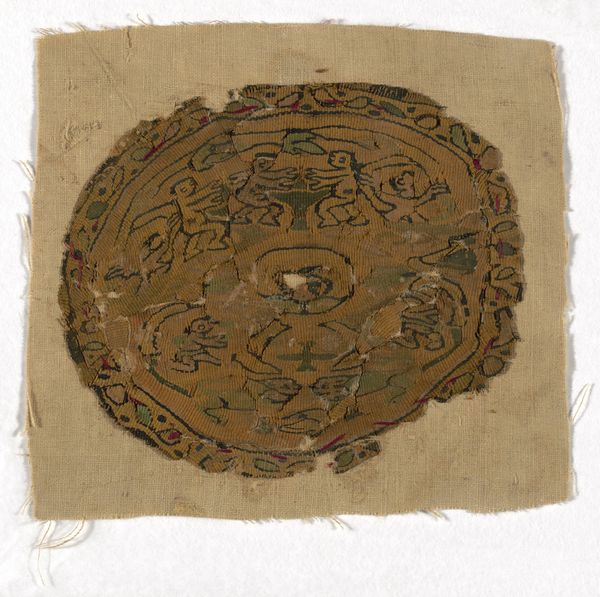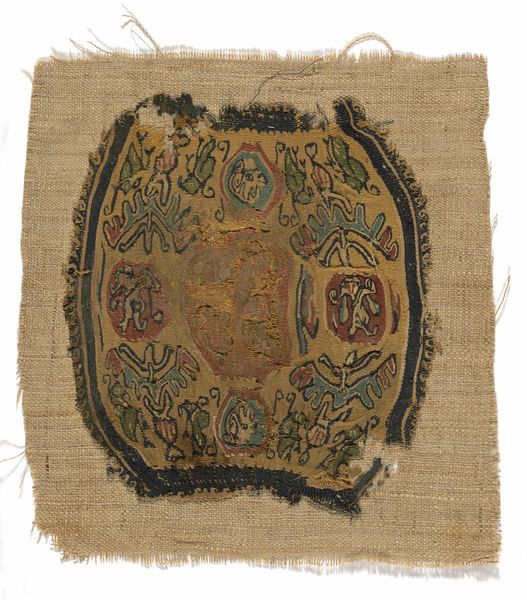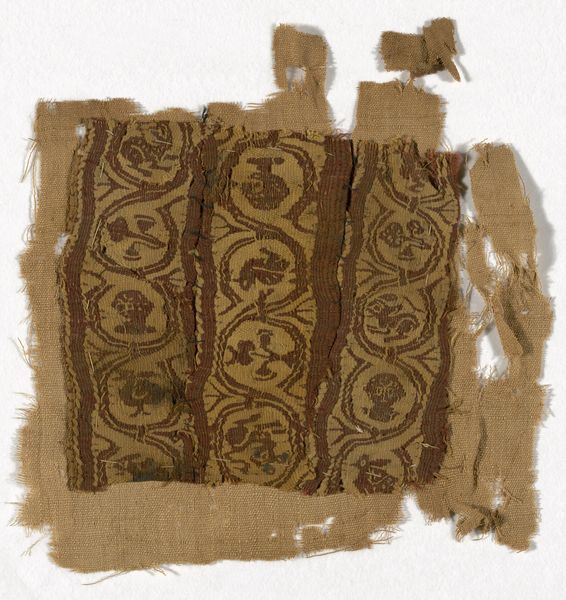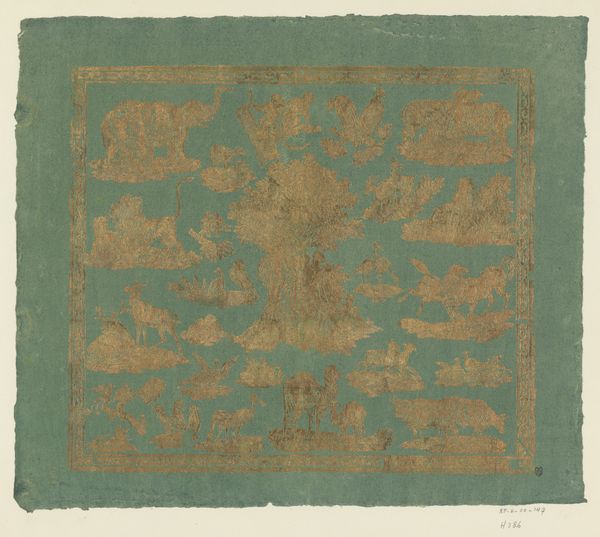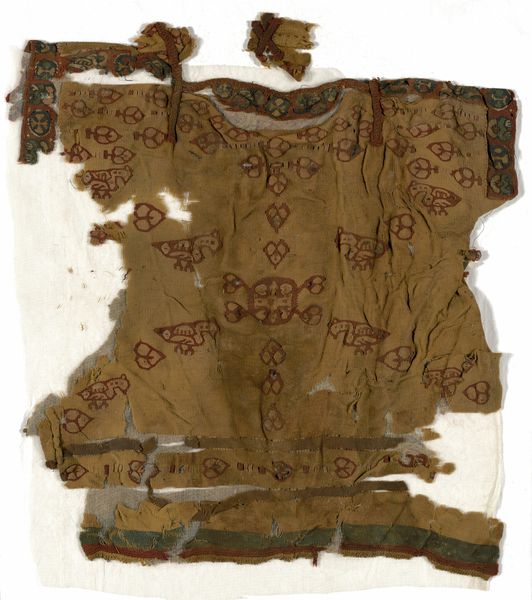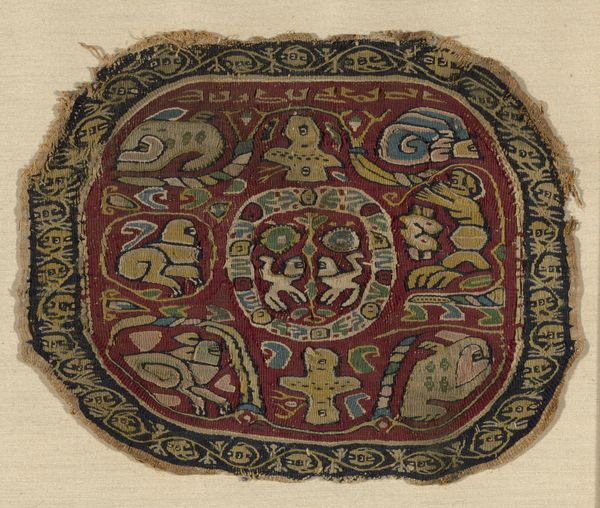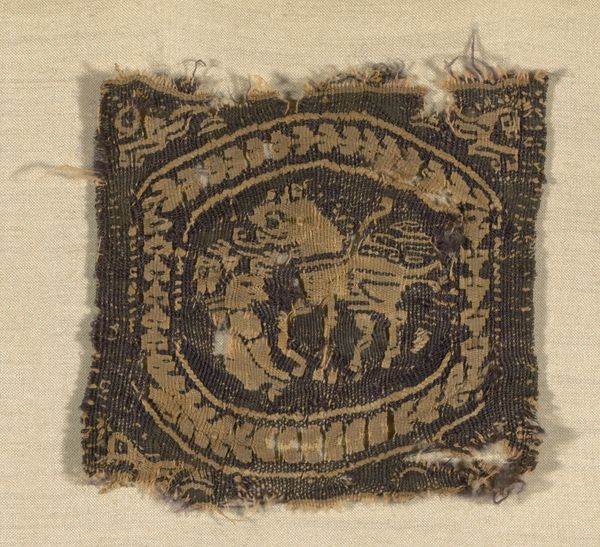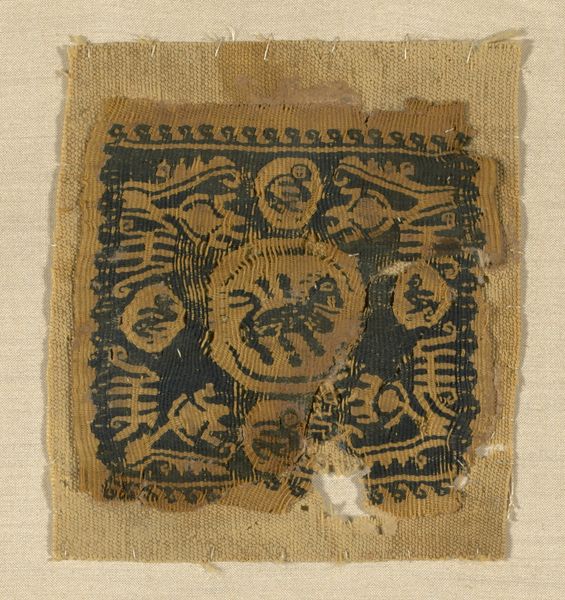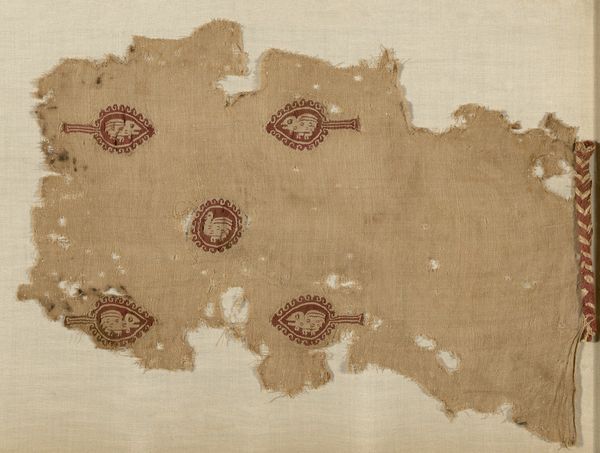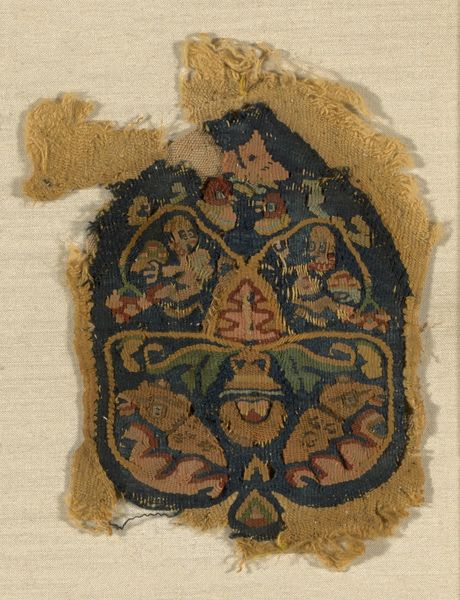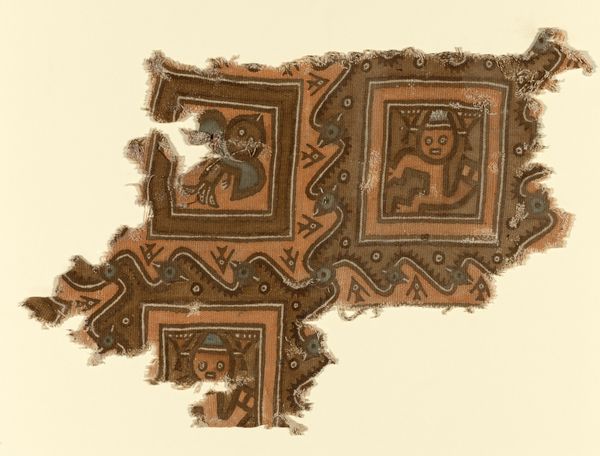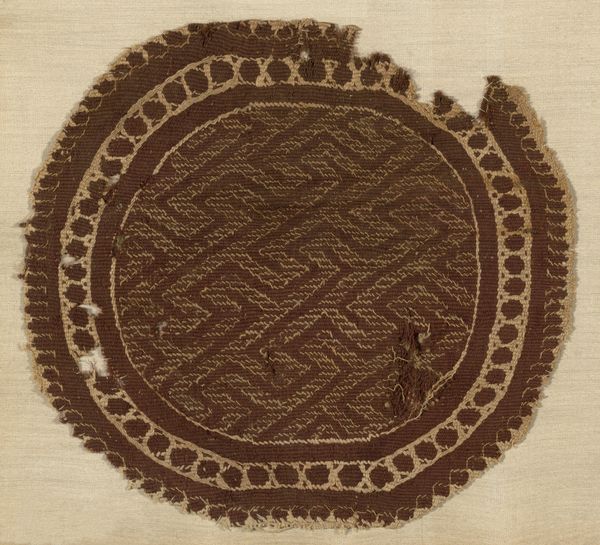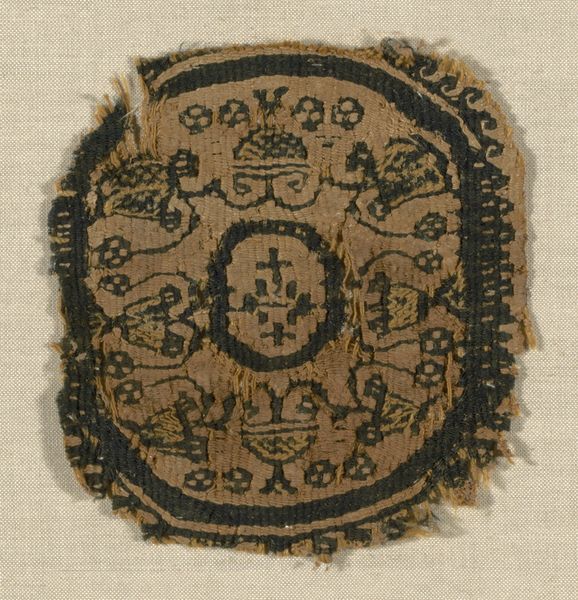
Roundel Roman period (30 B.C.– 641 A.D.)/Arab period (641–969), 5th/8th century
0:00
0:00
mixed-media, weaving, textile
#
mixed-media
#
weaving
#
textile
#
ancient-egyptian-art
#
ancient-mediterranean
#
mixed medium
#
mixed media
Dimensions: 10.8 × 10.8 cm (4 1/4 × 4 1/4 in.)
Copyright: Public Domain
Editor: This is a textile fragment called "Roundel," dating from the 5th to 8th century, a mixed-media weaving. The subdued earth tones give it such an ancient, weathered feel. What compositional elements strike you most in this piece? Curator: Primarily, I observe the careful interplay of form and texture. The fragment's rough, tactile surface is a result of the weaving technique. The colors—ochre, greens, and browns—appear deliberately chosen to create a harmonious, almost muted palette. Consider the concentric arrangement: do you think it provides visual structure, despite the fragmentation? Editor: I think it does, it still feels complete despite its state! The texture looks intentionally varied, with areas appearing denser than others, but where do you think it was meant to hang or belong, given its fragmented state? Curator: Its utility interests me. Note the fineness of the weave in areas contrasted with thicker, perhaps deliberately raised sections. The texture alone elevates it beyond mere function; it enters the realm of intentional artistry. Did the creator perhaps see value in embellishment itself? The structure emphasizes texture, color, and, ultimately, artistic expression over strict functionality. Editor: That's a fascinating point. So you're suggesting that even within a functional piece, the artist prioritized aesthetic qualities through deliberate textural variations? Curator: Precisely! Consider the use of negative space— the background cloth showing in gaps of the decorative work. This could be a technique of interest to minimalist artists. How it contributes to the overall visual dynamic intrigues me. It forces a perceptual engagement beyond simply “seeing” the artwork. Editor: This formal analysis has totally reshaped how I see this textile. Now I really see that what looks damaged, worn and fragmented is what makes this “Roundel” really interesting and evocative! Curator: Indeed. Form truly informs function and the interpretation itself becomes subjective when the original utility is unclear.
Comments
No comments
Be the first to comment and join the conversation on the ultimate creative platform.
